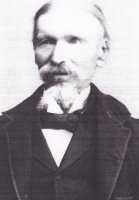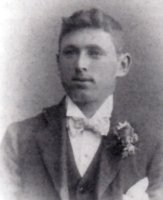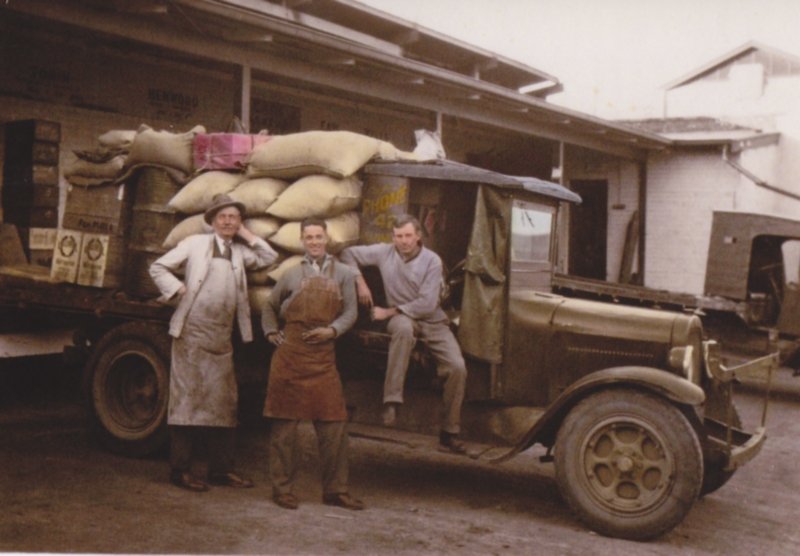The Male Family
Inducted into the Shell Rimula Wall of Fame at Reunion 2009.
In Mannum, in the Murray lands of South Australia there is today a successful transport business which has been owned and operated by five generations of one family over 140 years. The story of the origins and evolution of this company is the story of road transport in regional Australia.
In the 1860s William and Fredericka Male were farming a property just out of Mannum. When the chance arose to take over a small carrying business to Adelaide, Fredericka considered it not only a good business proposition, but also a good way of ensuring the delivery of their own farms eggs and butter to the Adelaide market. So they acquired the vehicle, described as a "little wagon like a hawker's" and William ran it and the farm together.
The business grew when neighbours added their produce to the load and began asking William to bring back goods from Adelaide. In 1894 two sons, Eli and Enos, took over the carrying business, building it up until they had a plant of sixty horses, a passenger-carrying drag, three six-ton vans and a six-ton trolley.
Male Brothers carted beer, groceries, furniture and building materials from Adelaide and going the other way, eggs, butter, skins, empty cases and casks. Mannum had always been a centre for the riverboat trade, and much of the produce destined for Adelaide was brought in on paddleboats. Ploughing shares manufactured in Mannum by David Shearer were also carried and the company continues to deliver Mannum-built agricultural machinery for Horwood Bagshaw.
Conrad was born at a time when momentous changes were facing the transport industry generally, and in particular, the Male Brothers, the family business operated by his father, Enos and his uncle Eli. The internal combustion engine was only 20 years old, but was being rapidly adapted to transport. Indeed, within a year of Con's birth, Male Brothers had bought a motorised chain-drive Commer truck on solid tyres, their first foray into motorised transport, and for the times, a very daring innovation.
The Commer's value may have been more promotional than practical, but its novelty provided a draw. It was often photographed carrying passengers on removable seats to race meetings, picnics and football matches in the district.
There was at least one hill on the run to Adelaide that the Commer could only manage in reverse gear, and it often became bogged on the football trips to Murray Bridge. Later model trucks proved more reliable and profitable, although the company continued the horse-drawn alongside the motorised vehicles well into the 1920s. Inevitably, the progressive bitumenising of the roads, the decline of the riverboat trade and the approach of the Depression meant that the horses could no longer compete. By then there were four six-tonne vehicles and a stable of 60 horses.
Con first drove the van and horses in the streets of Adelaide when he was 10. When Con left school he went to work in a garage for a time to build up his mechanical knowledge, because, by then, the company was running motorised vehicles alongside those that were horse-drawn. Enos Male, always more comfortable with horses than engines, decided to retire to his farm in the early 1930s and pass the business on to his son Conrad, the third generation of this truck-driving family.
Con soon bought a Diamond T truck, and in 1938 a new FordV8 with a custom built semi-trailer, the first of its kind in South Australia. These trucks greatly increased the company's capacity on the regular service to Adelaide and local deliveries and enabled Con to advertise "Interstate Haulage by arrangement." When Con's son Robert joined the company in 1952, they were mainly using International K-Series prime-movers with a few other types, including a Mercedes Benz.
Con had a fund of yarns about his trucking experiences and he loved to gather together the younger generations of his family and share stories about the exploits of his trucking adventures and those passed down to him by his father and grandfather. One such story he would tell was of Easter 1955 spent by the family, dismantling, drying out, cleaning and reassembling a new truck which had rolled into the Murray River when a driver left it outside a Mannum hotel to get a quick drink before 6 o'clock closing. Con handed the business onto his son in 1980 but still helped out around the yard. He died in 1992 and is buried in Mannum. He was a kindly, well-liked man in his profession and his community.


